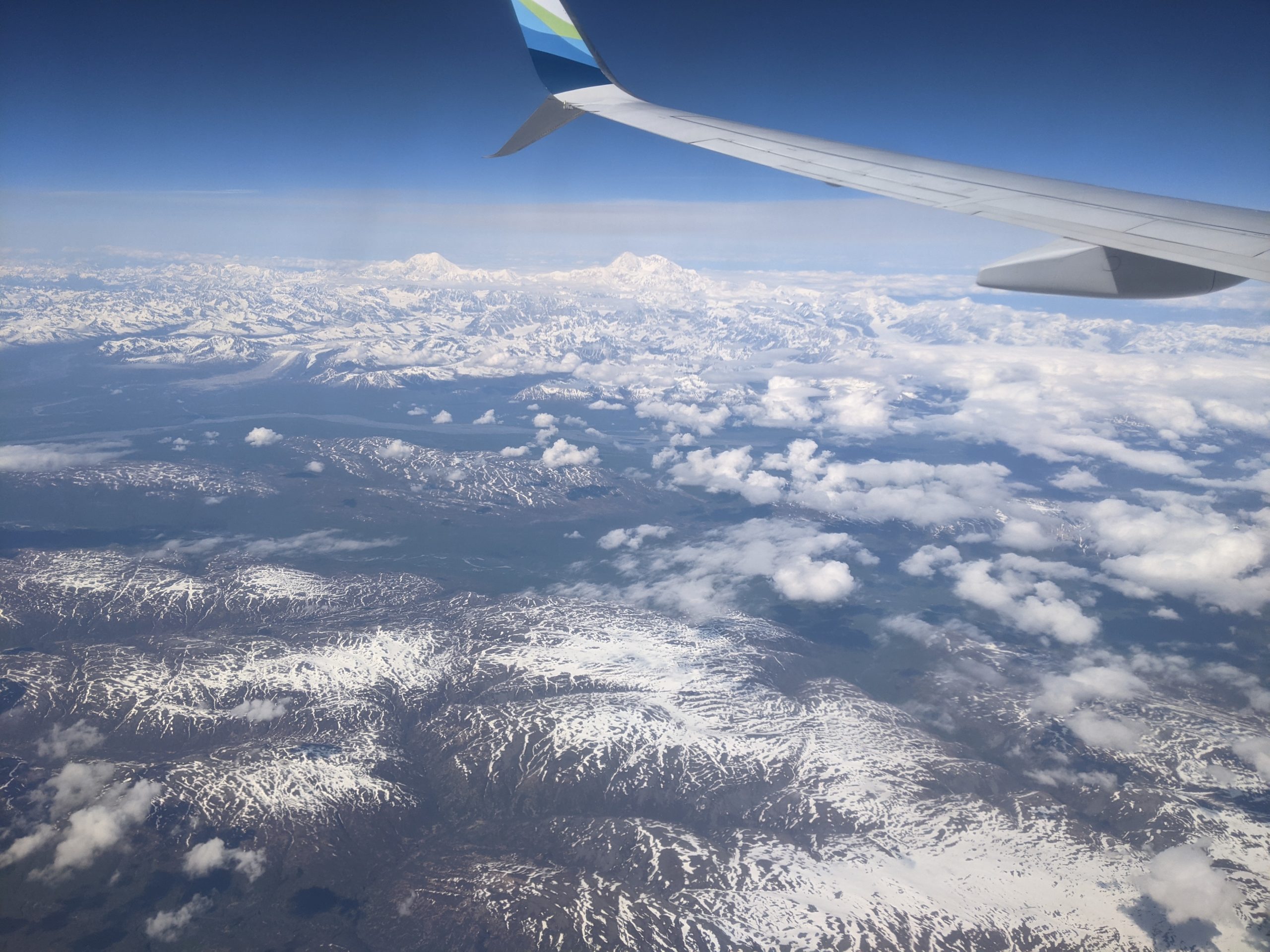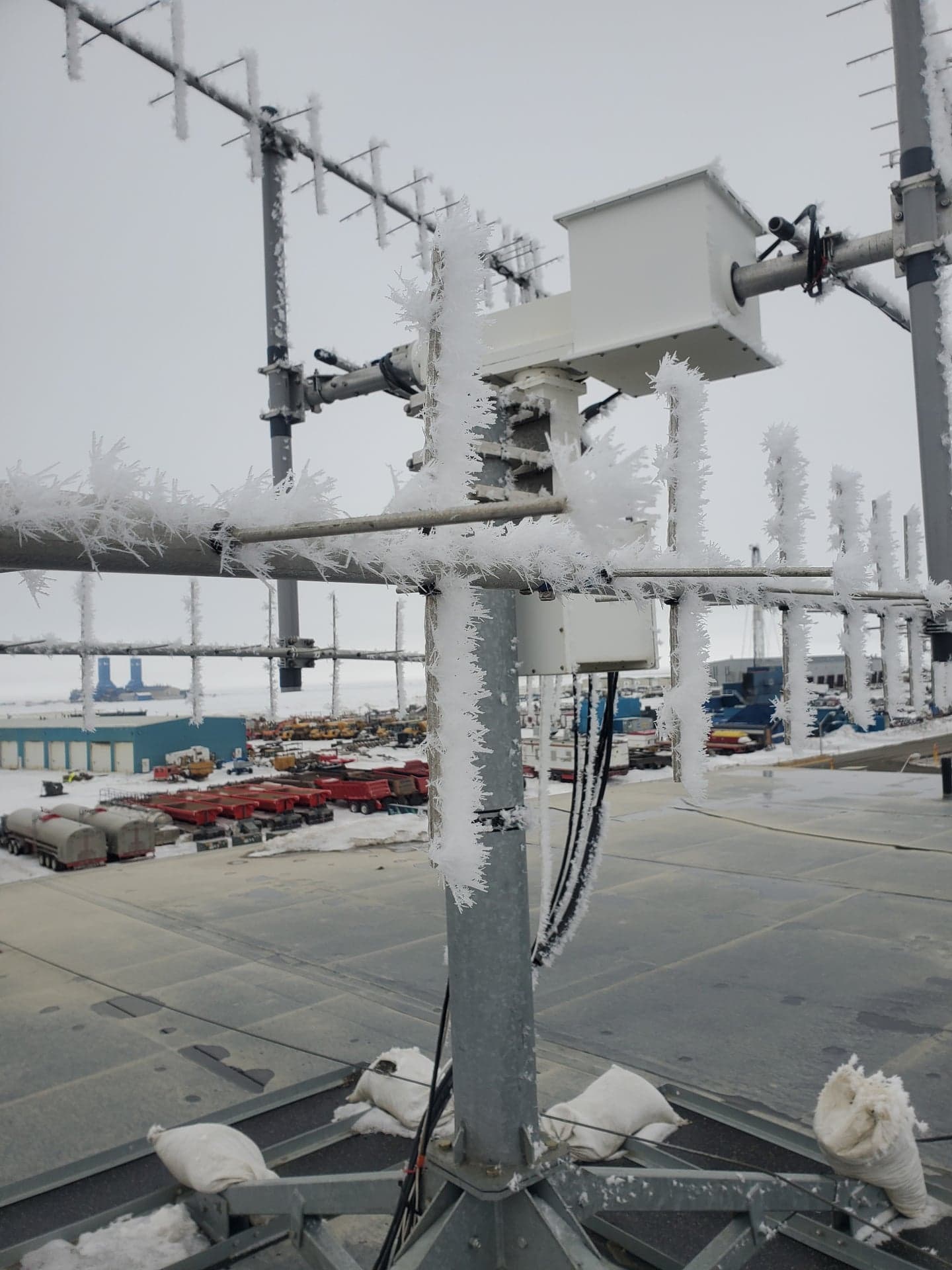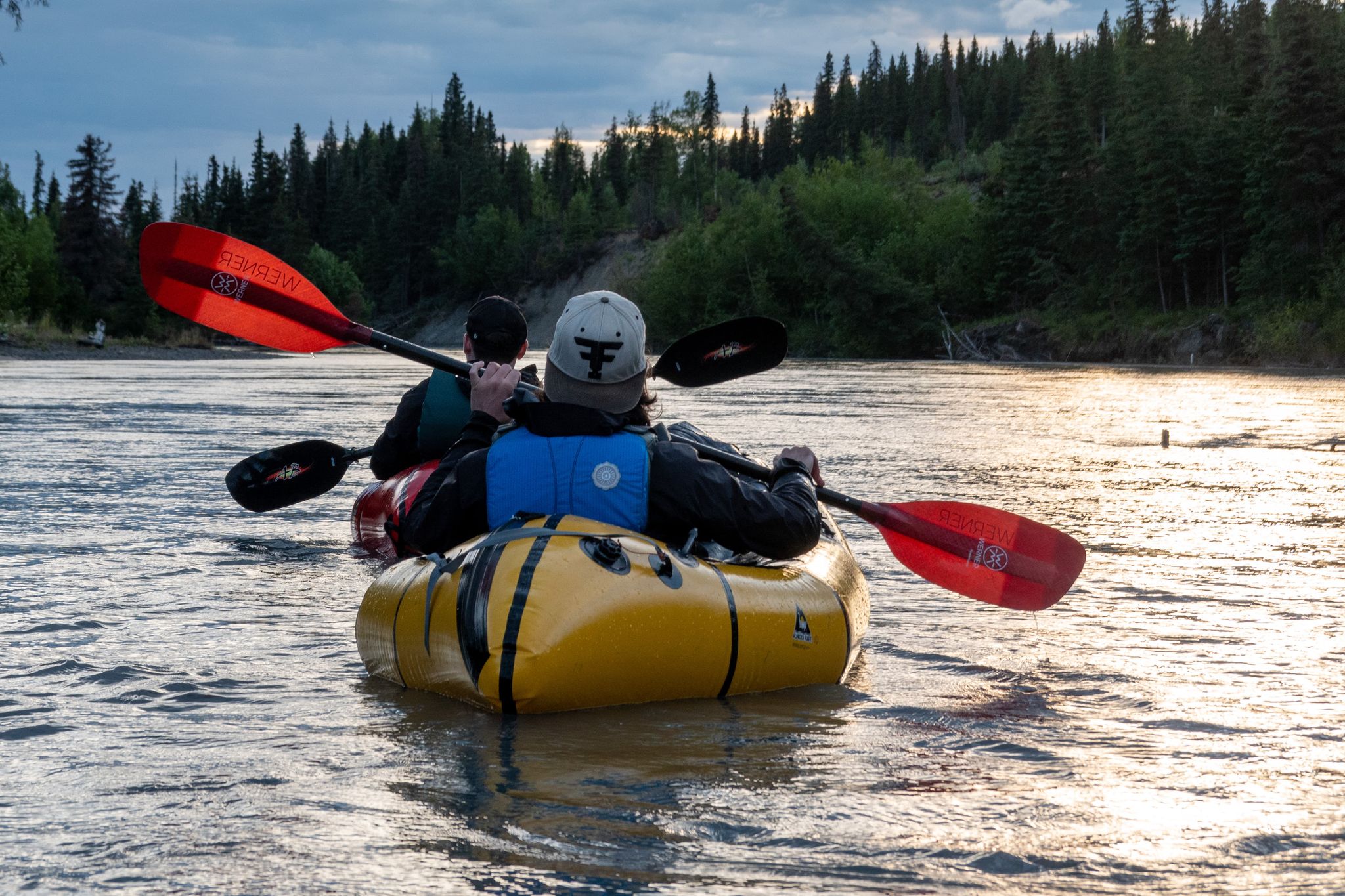
The operating, maintaining, and upgrading of antennas within the RBC Signals network can often take Ground Station Network Manager Zach Reich and Ground Station Technician Alex “Duffy” Schaeffer to far flung places. While some of RBC Signals ground stations are in beautiful and exotic locations, they also find allure and adventure in service of the customer visiting some of our most important sites in Alaska. Zach and Duffy’s most recent trip to Alaska was a six-day trip for annual spring maintenance as well as customer upgrades for our antennas in Fairbanks and Deadhorse, Alaska. The core of the trip was to install Software Defined Radios (SDRs) at several antennas to provide more flexibility and resiliency to existing and upcoming launching customers.

The view from the airplane between Deadhorse and Fairbanks
Zach and Duffy live in North Carolina and New York, respectively, which meant the journey began with a 16-hour journey to reach Deadhorse, Alaska, one of the highest northern latitude destinations in the United States. Deadhorse, traditionally a hub for oil related activity, also happens to sit at a high enough northern latitude to be well suited to catch the majority of passes of a polar orbiting satellite. While nothing on Earth can match the harshness of space, some might say that the Deadhorse can come close. The tradeoff for the high northern latitude is extreme weather – with an average temperature even in July of 48 degrees and winds regularly reaching 50mph and a record of 109mph. The RBC Signals crew is well versed at operating and maintaining antennas in these kinds of extreme environments, along with the help of remote site partners.

Accumulated frost on the RBC Signals UHF antenna in Deadhorse, Alaska
With RBC Signals having several customers with upcoming launches, Zach and Duffy readied the systems for upgrades, as well as did regular spring maintenance on the antennas. When you work in these kinds of locations with these kinds of partners, adventure is bound to follow. Sure, there is the pool table or gym to pass time, but the occasional grizzly or polar bear sighting is what one lives for. Since the days in Alaska had around 23 hours of sunlight at the time of their visit, it usually means a lot of time working, not that Zach and Duffy mind. Duffy says “It is always a pleasure when I get to work with Zach. Each of us are so in tune with each other that the jobs are done safely and precisely every time.”
After completing their work in Deadhorse, Zach and Duffy took the traditional 737 from Deadhorse to Fairbanks where RBC Signals maintains antennas on the campus of the University of Alaska, Fairbanks. Fairbanks is the third largest city in Alaska, with a population just north of 30,000. Small by comparison to most major American cities, but massive compared to the variously listed 25 to 50 residents of Deadhorse. Zach and Duffy installed software defined radios and switches at the antennas to make the site both more resilient and even more multi-mission, multi-tenant, all adding up to more flexibility for the customer. Zach says “The industry is moving toward flexibility and ease of use over dedicated hardware-based mission receivers, and more flexible SDRs help RBC Signals deliver a diverse and affordable capability set to our customers.” After the work in Fairbanks was completed, Zach and Duffy made sure and adhered to an RBC Signals tradition – a stop at Lane’s Quicky Tacos, a place they hope earns its rightful place in the show ”Diners, Drive-ins, and Dives”.
Of course, it would be a disservice to the beauty and majesty of Alaska to not find time to explore the great outdoors. Fortunately for Zach and Duffy, they met a great guide in the form of their local field partner, John G. In the end, a long, adventurous journey and a job well done in service of a customer and satellite beaming down data to the far reaches of the Earth is enough to get Zach and Duffy looking forward to their next trip to Alaska.

Zach and Duffy kayaking down the Eagle river in Alaska
##
